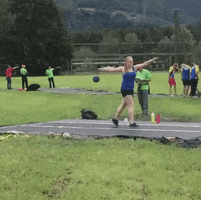- Joined
- Sep 5, 2009
- Messages
- 3,538
- Reaction score
- 1,675
The Base Drag Hack is one of those legends on TRF that gets repeated over and over and assumed to be true. Here are 3 reasons why this technique should be abandoned.
1. The origin of the technique is from Bruce Levison in the Apogee Reak of Flight newsletters
Simulating Short, Wide Rockets in Rocksim 8, Newsletter 154
Simulating Short, Wide Rockets, Part 2, Newsletter 158
Simulating Short, Wide Rockets in Rocksim 8.0, Newsletter 162
Read them closely, especially the first one. Levison wants to add a base vortex CP effect to short/wide rockets. Why? Did Barrowman forget? All rockets have base drag, so why is the technique limited to those less than 10:1? None of this is explained. Instead, Levison's motivation is to make the stable FatBoy (margin = 0.6) have a 1.0+ margin instead, so that it agrees with the 1-caliber rule of thumb. He artificially moves the CP rearward with no evidence that it is a more accurate location on a rocket.
Apogee warns users that they are at their own risk with the method and never implemented a base drag option in RockSim. Neither did Rogers in RASAero.
2. Barrowman's equations use normal forces, and adding an axial base force would be inconsistent. The man himself, Jim Barrowman at NARCON2021, notes that base drag not a normal force and has nothing to do with stability. Scroll to 49:00.
3. My CFD analysis predicts the Fat Boy CP location is around the fin leading edge, similar to Barrowman software and their variations. The additional Base Drag Hack puts the CP much further aft and stands as an outlier. The CFD may not be perfect, but it is an alternative prediction using proven industrial techniques that also disagrees with the hack.
Artificially moving the CP rearward without good reason is a potentially dangerous thing. Don't do it.
1. The origin of the technique is from Bruce Levison in the Apogee Reak of Flight newsletters
Simulating Short, Wide Rockets in Rocksim 8, Newsletter 154
Simulating Short, Wide Rockets, Part 2, Newsletter 158
Simulating Short, Wide Rockets in Rocksim 8.0, Newsletter 162
Read them closely, especially the first one. Levison wants to add a base vortex CP effect to short/wide rockets. Why? Did Barrowman forget? All rockets have base drag, so why is the technique limited to those less than 10:1? None of this is explained. Instead, Levison's motivation is to make the stable FatBoy (margin = 0.6) have a 1.0+ margin instead, so that it agrees with the 1-caliber rule of thumb. He artificially moves the CP rearward with no evidence that it is a more accurate location on a rocket.
Apogee warns users that they are at their own risk with the method and never implemented a base drag option in RockSim. Neither did Rogers in RASAero.
2. Barrowman's equations use normal forces, and adding an axial base force would be inconsistent. The man himself, Jim Barrowman at NARCON2021, notes that base drag not a normal force and has nothing to do with stability. Scroll to 49:00.
3. My CFD analysis predicts the Fat Boy CP location is around the fin leading edge, similar to Barrowman software and their variations. The additional Base Drag Hack puts the CP much further aft and stands as an outlier. The CFD may not be perfect, but it is an alternative prediction using proven industrial techniques that also disagrees with the hack.
Artificially moving the CP rearward without good reason is a potentially dangerous thing. Don't do it.





